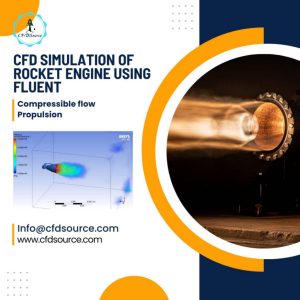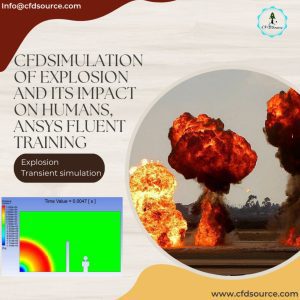Beyond the Price Tag: Why “It Depends” Is the Only Honest Answer in High-Fidelity CFD
Let’s get straight to it. You’re asking how much do CFD consulting services cost? The honest, non-salesy answer is: it really depends. And any consultant who gives you a flat rate over the phone without deeply understanding your problem is probably cutting corners somewhere. The final price isn’t pulled from a hat; it’s a direct reflection of the engineering effort required to get you a result you can actually trust to make design decisions.
For us, it’s about delivering real-world value through our [CFD consulting services]. Think of it less as a cost and more as an investment in de-risking your product development. We’ve seen it time and again: a small investment in upfront simulation saves tens of thousands in failed prototypes down the line.
The Core Pricing Equation: Breaking Down Your CFD Project Investment
So, how do we break it down? It’s not a secret formula. The cost of any CFD project is essentially a function of a few key variables. Understanding these factors will not only demystify the price but also help you scope your project more effectively.
We map out every one of these steps for our clients. It’s a transparent process from start to finish. In fact, we’ve detailed [our step-by-step CFD project process] so you can see exactly how we move from an initial idea to a final, actionable report.
Factor 1: Physics & Problem Complexity – From Simple Airflow to Reactive Multiphase FSI
This is the biggest driver of cost. A simple, steady-state airflow analysis over a heatsink in an open environment is relatively straightforward. The physics are well-understood (convection, maybe some radiation) and the solver can reach a solution fairly quickly.
Now, compare that to simulating a multiphase reactive flow inside an industrial mixer. Here, we’re dealing with multiple interacting fluids (e.g., liquid-gas), chemical reactions that generate heat, and rotating parts (requiring sliding mesh techniques). The complexity, and therefore the engineering time and computational power needed, is an order of magnitude higher. Or even a Fluid-Structure Interaction (FSI) problem where the fluid forces deform a structure, which in turn changes the flow. Each layer of physics adds to the project scope.
Factor 2: Geometry Preparation & Meshing – The Unseen 60% of Project Effort
After doing this for over a decade, I can tell you one thing: “garbage in, garbage out” is the absolute truth of CFD. The most overlooked part of any project is preparing the CAD geometry and creating a high-quality mesh. A client might send over a CAD file that looks fine on the surface, but it’s full of tiny, insignificant features, non-manifold edges, or small gaps.
I remember a project for an automotive client where the provided CAD for an under-hood component looked perfect. But importing it revealed hundreds of tiny sliver surfaces that would have crashed the mesher. It added almost three days of manual cleanup before we could even start generating the mesh. Those kind of surprises are what we try to forsee and budget for, because the quality of that mesh, especially the inflation layers for resolving the boundary layer (getting that y+ right!), directly determines the accuracy of the final result.
Factor 3: Computational Resources – The Cost of CPU Hours on High-Performance Clusters
Serious CFD doesn’t run on a laptop. 💻 We use high-performance computing (HPC) clusters with hundreds of CPU cores. Running a large, transient (time-dependent) simulation can mean occupying a significant portion of that cluster for days, or even weeks.
This computational time has a real cost. A steady-state simulation with 5 million cells might solve in a few hours. A transient simulation of the same model running for just 2 seconds of real-time could take 100 times longer. The cost of these CPU-hours is a direct and unavoidable part of the project’s price.
Factor 4: Accuracy, Validation, and Convergence Criteria
Getting a colorful plot is easy. Getting a plot that accurately represents reality is the hard part. Part of what you’re paying for is the engineering rigor to ensure the results are trustworthy. This means setting tight convergence criteria to ensure the solution is stable and, most importantly, performing a validation study whenever possible.
This could mean comparing our simulation results against published experimental data for a similar problem or against your own physical test data. This step is critical. Without it, you’re just making a pretty picture. It’s the core of [why partnering with a fluid dynamics specialist pays off in R&D]; you’re paying for confidence in the data, not just the data itself.
CFDSource Service Tiers: Illustrating Costs with Real-World Project Examples
Talking about abstract factors is one thing, but real examples make it tangible. To give you a better idea, here are three common project tiers we handle regularly. These aren’t rigid packages, but they represent a spectrum of complexity and help frame where your project might fit. This is often the starting point in the classic [debate between building an in-house CFD team or outsourcing] to a specialized firm.
Tier 1 Example: External Aerodynamics Analysis for a Drone Frame
This is a classic CFD application. The goal is straightforward: determine the lift and drag forces on a drone frame at various angles of attack. The physics are single-phase (just air), and it’s typically a steady-state problem. The primary challenges are creating a clean, high-quality mesh around the complex surfaces of the drone. A project like this usually falls in the low-to-mid four-figure range.
Tier 2 Example: Electronics Cooling & Conjugate Heat Transfer (CHT)
Here, things get more interesting. Imagine a sealed electronics enclosure with a CPU, several power resistors, and a fan. We need to know the junction temperature of the CPU and if any hotspots will cause component failure. This requires a Conjugate Heat Transfer (CHT) analysis, where we simulate both the fluid flow (air) and heat conduction through the solid materials (the PCB, chips, heatsinks). It’s more complex and computationally intensive. This type of [deep-dive thermal analysis for electronics] is one of our specialities, and it’s’ cost typically falls in the mid-to-high four-figure range.
Tier 3 Example: Advanced Multiphase Simulation in an Industrial Mixer
Now we’re in the big leagues. A client wants to optimize the mixing efficiency of two liquids in a large industrial vat with a rotating impeller. This requires a transient, multiphase model (like Volume of Fluid – VOF) combined with a sliding mesh interface for the impeller. The simulation needs to run long enough to capture the full mixing process. These projects require significant engineering expertise and massive computational resources, often pushing costs well into the five-figure range.
Here’s a quick-glance table to summarize:
| Project Tier | Complexity Level | Typical Application | Estimated Cost Range |
| Tier 1 | Low-Medium | External Aerodynamics (Drone, Vehicle) | Low-to-Mid 4 Figures |
| Tier 2 | Medium-High | Electronics Cooling (CHT), HVAC | Mid-to-High 4 Figures |
| Tier 3 | High-Very High | Multiphase Flow, FSI, Combustion | 5 Figures and Up |
What Are You Actually Paying For? The Deliverables from a CFDSource Partnership
When you partner with us, you’re not just buying CPU time or a pretty picture. You’re investing in engineering insight. You’re paying for the confidence that the results are right and the peace of mind that your intellectual property is protected.
More Than a Colorful Plot: An Actionable Engineering Report with Design Recommendations
Anyone can generate a velocity contour plot. The real value is in the interpretation. Our final deliverable is always a comprehensive engineering report. It doesn’t just show you what is happening; it explains why. We’ll point out the region of flow recirculation causing a pressure drop and suggest specific, actionable geometry changes to fix it. That’s the difference between data and a solution.
Your Intellectual Property is Safe: Our Commitment to Non-Disclosure Agreements (NDAs)
We work on sensitive, pre-production designs every single day. We get it. Your IP is your company’s lifeblood. That’s why we operate under strict Non-Disclosure Agreements. Your project data is confidential, full stop.
How to Optimize Your Budget and Get a Better Quote
There’s a few ways you can help us give you a more accurate—and often lower—quote. If you want to get the most value for your investment, providing clear inputs is the single best thing you can do.
- Provide Clean CAD: The more time we have to spend cleaning up your 3D models, the higher the cost. A “watertight” CAD file with no stray surfaces saves everyone time and money.
- Be Specific About Your Goals: Instead of asking “can you simulate our product?”, ask a specific question: “What is the pressure drop across this valve at a flow rate of 5 kg/s ?” A clear objective prevents scope creep.
- Share Any Existing Data: If you have physical test data, even if it’s limited, it’s incredibly valuable for validating the simulation model.
Ultimately, understanding how much CFD consulting services cost is about understanding the engineering effort involved. We believe in transparency, and our goal is to scope your project correctly from day one to provide maximum engineering value for your budget.


